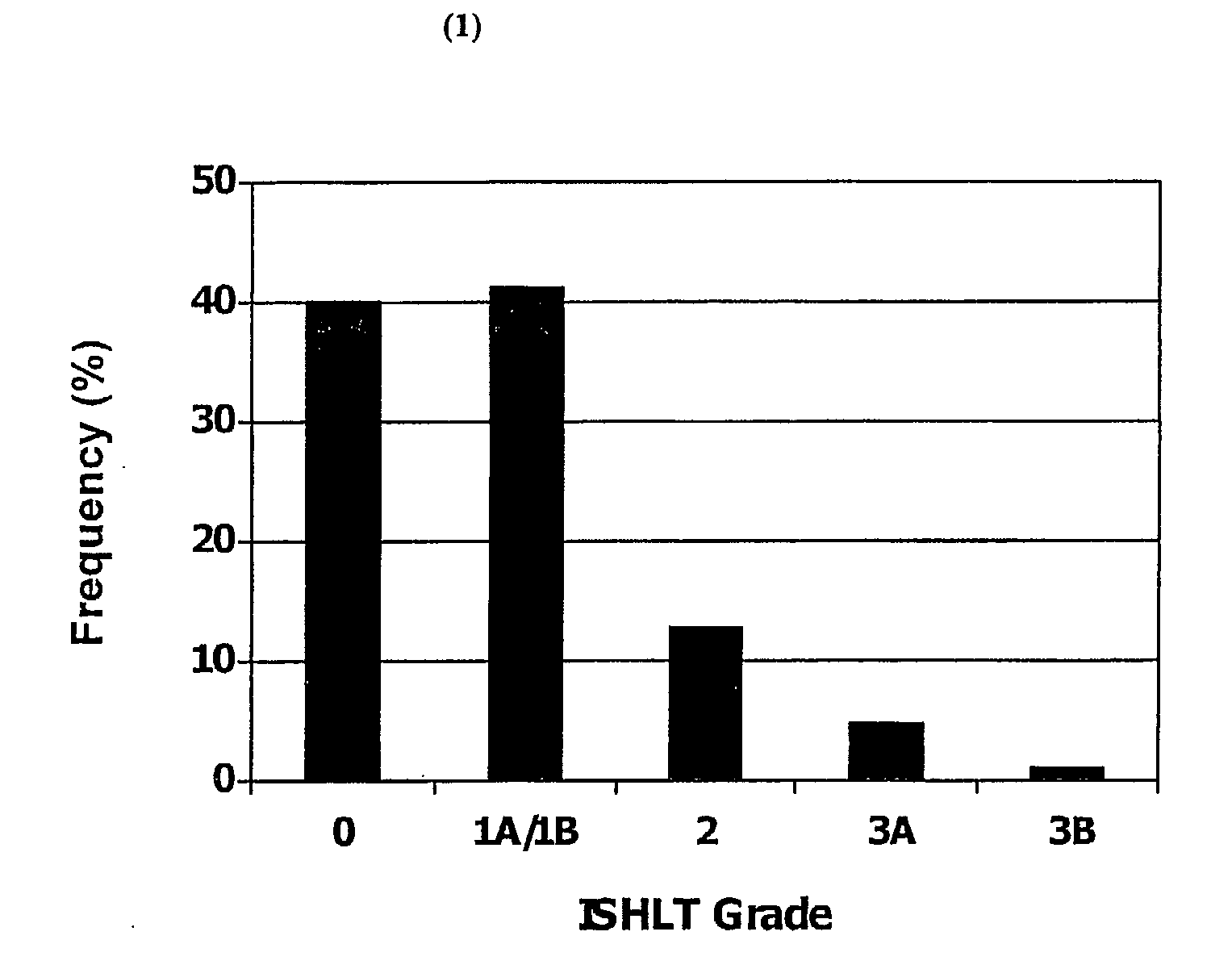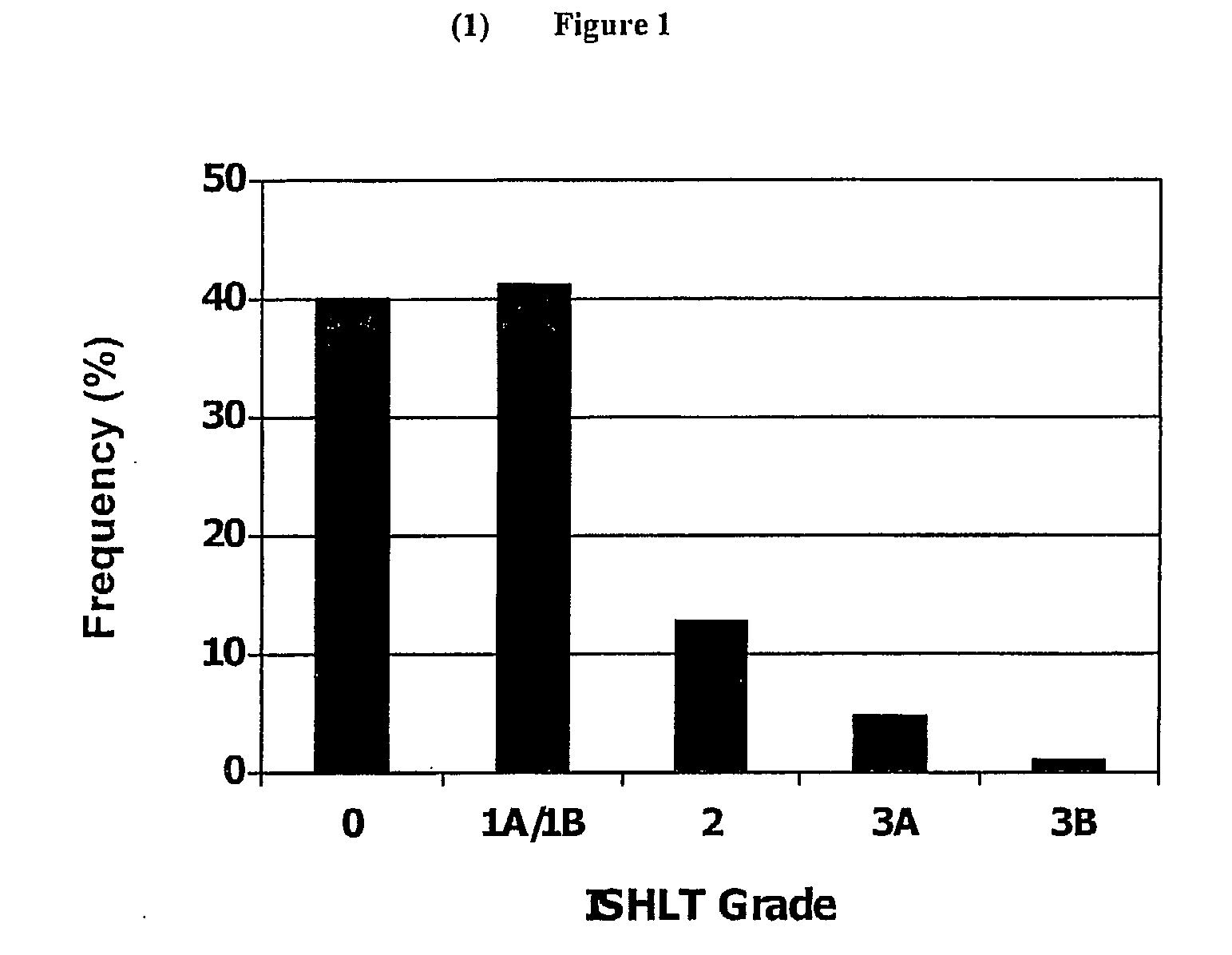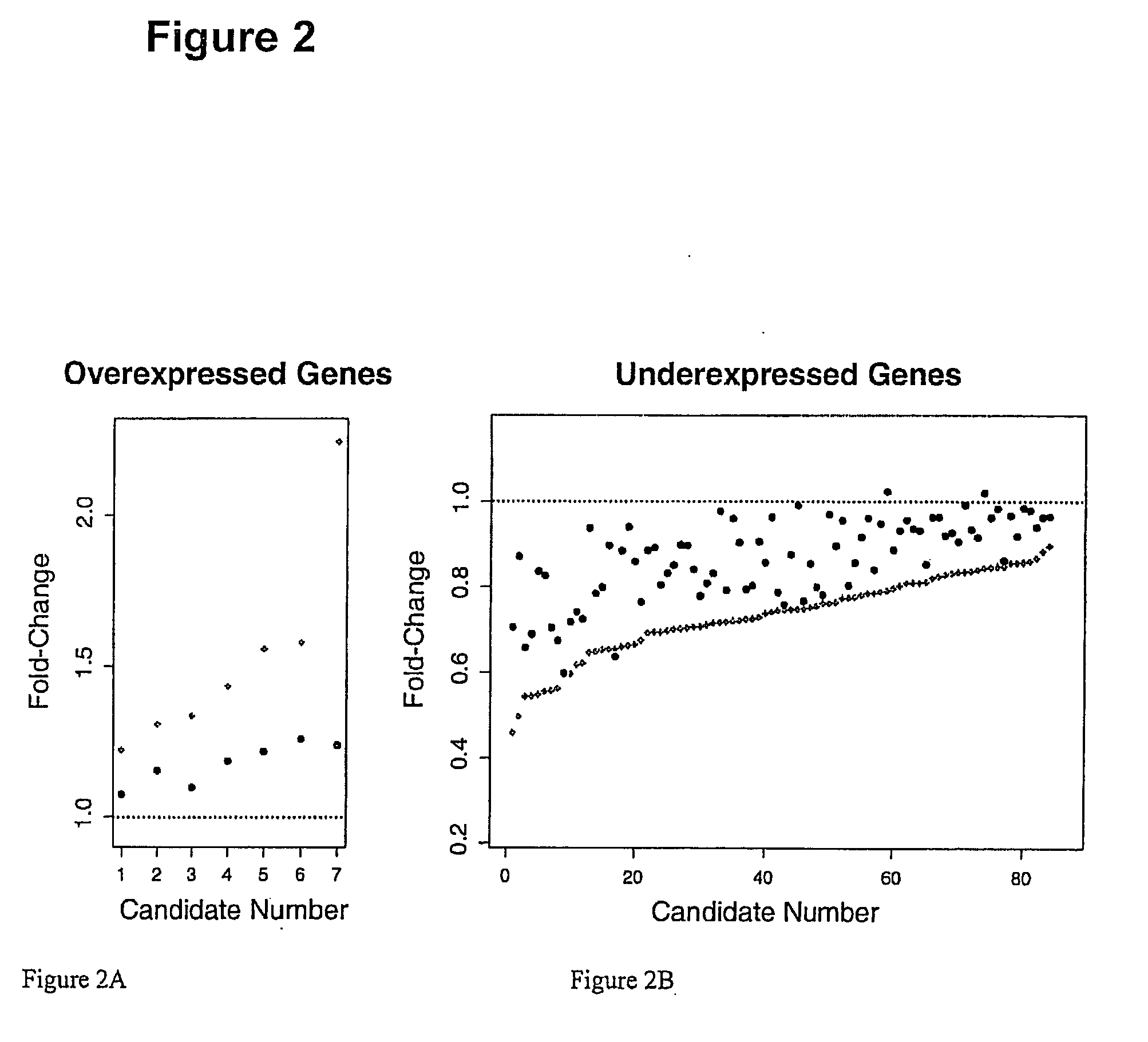Novel Predictors of Transplant Rejection Determined by Peripheral Blood Gene-Expression Profiling
a gene expression and prediction technology, applied in the field of predicting the probability of transplant rejection, can solve the problems of persistent shortage of organs, inability to tolerate recipients to transplant tissue, and inability to achieve much success in tolerating recipients to transplant tissue. achieve the effect of increasing expression
- Summary
- Abstract
- Description
- Claims
- Application Information
AI Technical Summary
Benefits of technology
Problems solved by technology
Method used
Image
Examples
example 1
Correlating Cardiac Allograft Rejection and Peripheral Blood Gene Expression
Methods
[0093]409 blood samples were prospectively collected from 189 consecutive cardiac transplant patients referred for routine surveillance EMB.
[0094]Blood obtained from a central venous sheath immediately prior to Endomyocardial Biopsy (EMB) was collected in RNA preservation solution (PAXgene™ Blood RNA Tubes, Qiagen Inc.) for immediate RNA stabilization and storage at −80° C. EMB specimens were processed and assessed by a cardiac pathologist and rejection grade was detenmed using the International Society for Heart and Lung Transplantation (ISHLT) grading system. This system categorizes biopsies into several grades (0, 1A, 1B, 2, 3A, 3B, and 4) based on the extent of lymphocyte infiltration, myocyte necrosis, and presence or absence of hemorrhage.
Study Design
[0095]A nested case-standard study of peripheral blood gene expression was performed within a cohort of biopsy p...
PUM
| Property | Measurement | Unit |
|---|---|---|
| immune reactivity | aaaaa | aaaaa |
| temperature | aaaaa | aaaaa |
| blood pressure | aaaaa | aaaaa |
Abstract
Description
Claims
Application Information
 Login to View More
Login to View More - R&D
- Intellectual Property
- Life Sciences
- Materials
- Tech Scout
- Unparalleled Data Quality
- Higher Quality Content
- 60% Fewer Hallucinations
Browse by: Latest US Patents, China's latest patents, Technical Efficacy Thesaurus, Application Domain, Technology Topic, Popular Technical Reports.
© 2025 PatSnap. All rights reserved.Legal|Privacy policy|Modern Slavery Act Transparency Statement|Sitemap|About US| Contact US: help@patsnap.com



